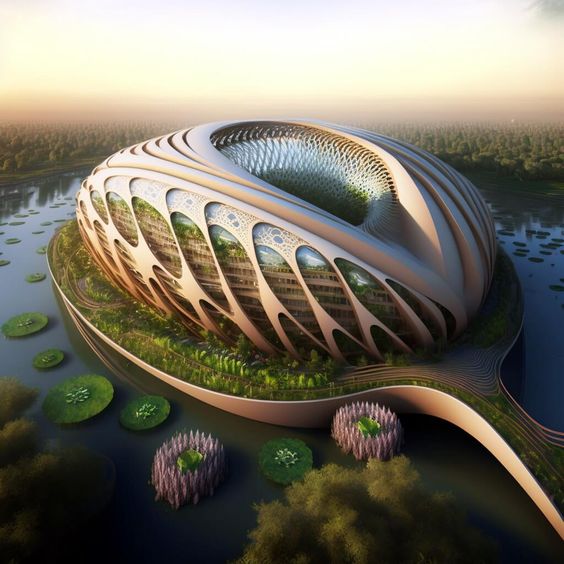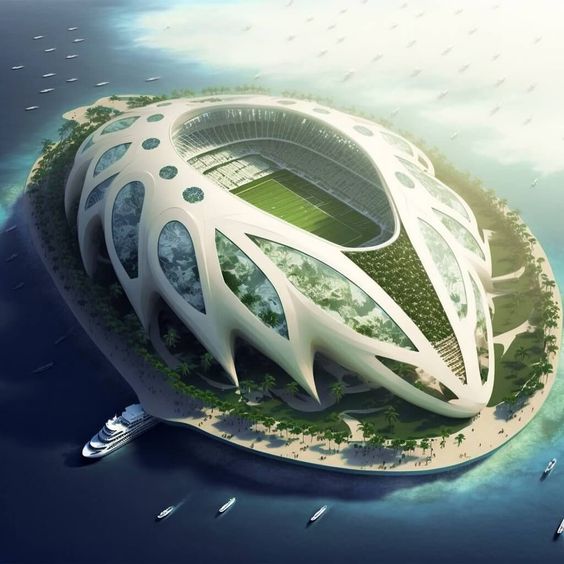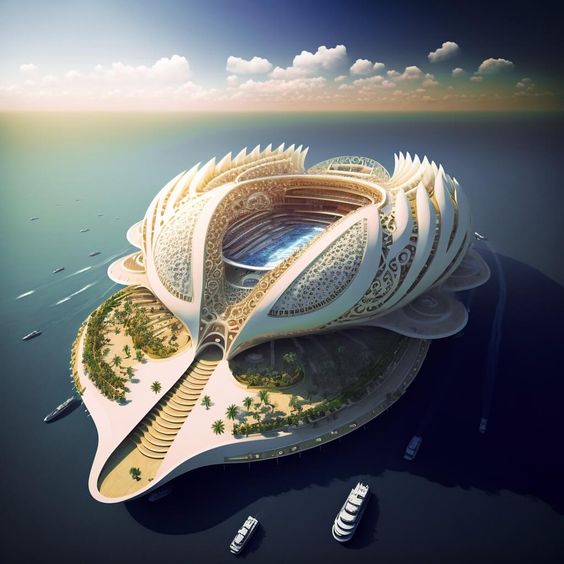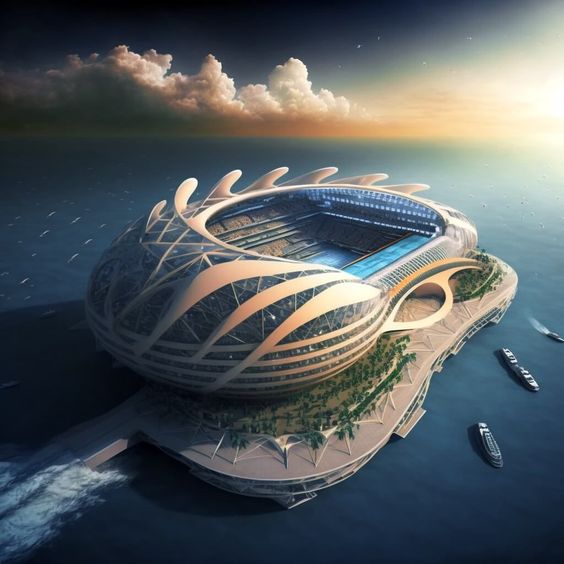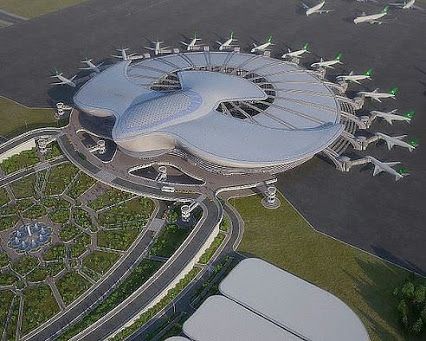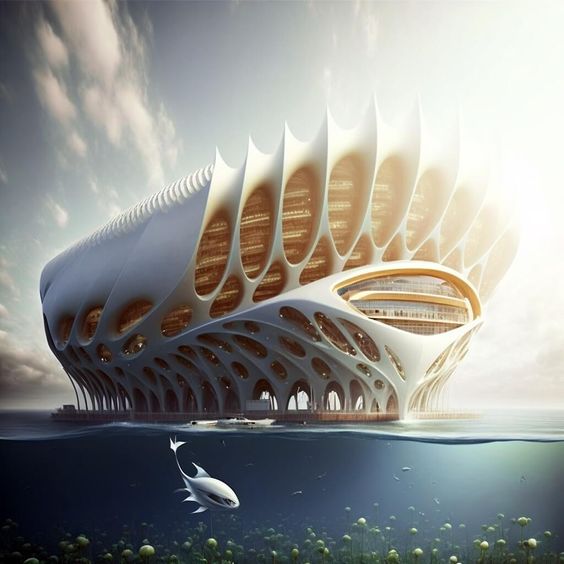OCEANIUMS, A Biomimetic Generation of Floating and Sustainable Stadiums, by Vincent Callebaut Architectures
Vincent Callebaut Architectures presents an innovative concept called OCEANIUMS, which represents a biomimetic generation of floating and sustainable stadiums. These visionary structures aim to combine human creativity with the wisdom of nature, creating harmonious and eco-friendly spaces that coexist with the marine environment.
The Oceaniums can be envisioned as magnificent stadiums of the oceans, designed to blend seamlessly with their surroundings while offering unique and immersive experiences to visitors. What sets these stadiums apart is their commitment to using only biosourced and recycled materials, ensuring minimal environmental impact throughout their lifecycle.
In line with the principles of sustainability, the construction of Oceaniums relies on a careful selection of materials. Solid wood, known for its strength and renewability, forms a crucial component of the structure. By opting for recycled aluminum, the architects ensure that existing resources are repurposed, reducing the need for further extraction.
One of the groundbreaking aspects of Oceaniums is their use of green algae, a remarkable organism that has the potential to revolutionize various industries. In this case, green algae serves as a multifunctional element within the stadium’s design. It acts as a natural filter, purifying the water and maintaining a healthy ecosystem for marine life. Additionally, green algae can be cultivated for biofuel production, further enhancing the stadiums’ sustainability.
Another notable feature of Oceaniums is their utilization of plastic waste from the 7th continent, a term used to describe the vast accumulation of plastic debris in the five oceanic gyres. By incorporating this waste into the construction process, the stadiums actively contribute to cleaning up the oceans and reducing the negative impact of plastic pollution.
The vision behind Oceaniums extends beyond their physical construction. These floating stadiums are designed to be self-sufficient and resilient, drawing inspiration from the complex and efficient systems found in nature. The integration of renewable energy sources, such as solar panels and wind turbines, enables the stadiums to generate their own power, minimizing their carbon footprint.
Furthermore, Oceaniums embrace biomimicry, a design approach that emulates nature’s strategies and forms. Taking cues from marine organisms, these stadiums optimize their aerodynamics and structural stability, ensuring their ability to withstand oceanic conditions while minimizing energy consumption.
Vincent Callebaut Architectures’ Oceaniums concept represents a groundbreaking approach to sustainable architecture. By harmoniously blending with the marine environment and using biosourced and recycled materials, these floating stadiums serve as symbols of our commitment to a greener and more responsible future. They offer not only awe-inspiring experiences but also a profound message of environmental stewardship, inspiring us to reimagine our relationship with nature and strive for a more sustainable world.
Hits: 1
